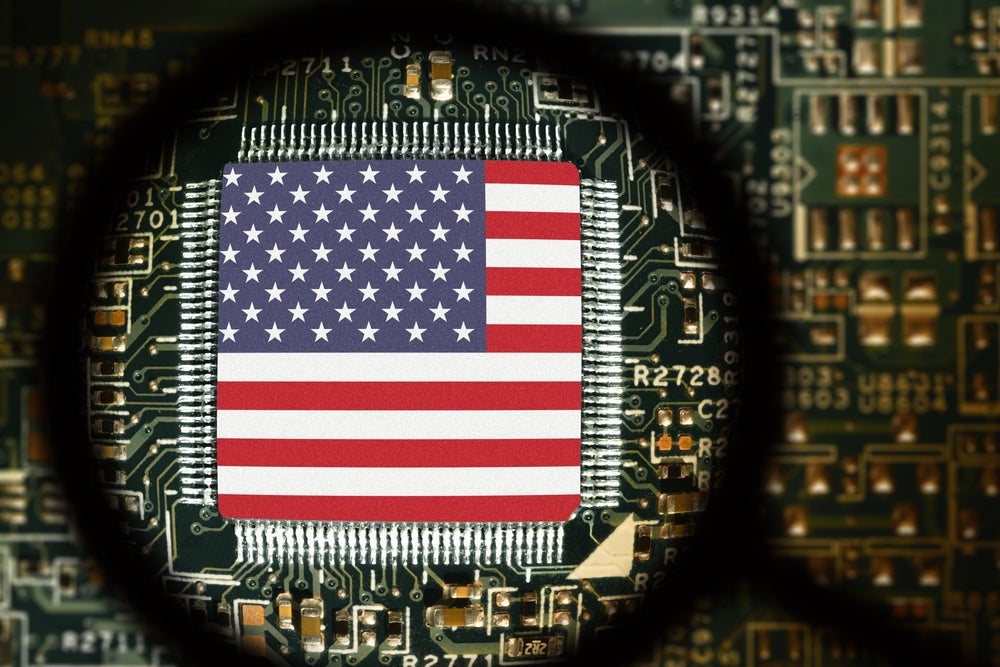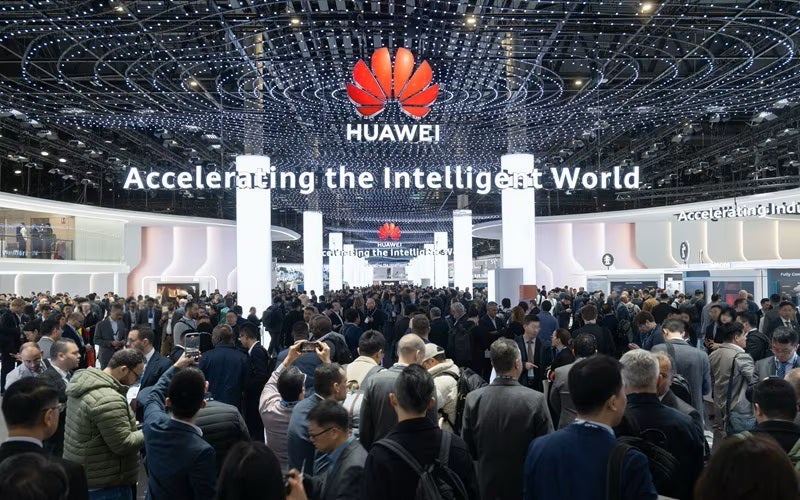
On 24 March US President Trump addressed a group of reporters announcing a $5bn automotive plant investment in Louisiana while making reference to forthcoming tariffs for the industry.
The event preceded an announcement a few days later (26 March) of 25% global tariffs on all automotive imports into the US, part of Trump’s economic strategy to re-shore manufacturing lost to past decades of globalisation.
If the President’s habit of dropping breadcrumbs before a big reveal on tariffs is anything to go by, what he said next should create cause for concern within the tech industry as he referred to further tariff announcements: “Having also to do a little bit with lumber down the road, lumber and chips. We’re gonna get all those chip companies coming back, they are already come back without even doing it, so it’s been very good, but we will be announcing some others. For the most part April 2nd will be a big day.”
A raft of new tariff announcements are expected on 2 April, dubbed Liberation Day by Trump, in the administration’s most significant rolling back, yet, of US open trade policy in favour of trade protectionism.
The comments also follow a statement in February, signalling that Trump may impose a “25% or higher” tariff on all semiconductors imported into the US. The prevailing narrative which suggests not taking Trump at his word is the global tech industry’s best-case scenario.
Many tech industry leaders maintain that tariffs on semiconductors and countries of strategic importance in the supply of chips to the US, would be an act of self harm for the US, while others see it as a redressing of the global trade balance.
Where would chip tariffs hurt the most?
Tariffs on Chinese chips would not impact premium products in the US, according to Bill Rojas, GlobalData Strategic Intelligence research director who notes that China supplies less than 8% of the world’s supply chain.
However, most if not all major chips including CPUs, GPUs, HBM, and DDR RAM come from Taiwan, Japan or Korea. For example, Qualcomm Snapdragon chips and the Apple iPhone processors and NVIDIA GPU chips are made by TSMC or other Taiwanese fabs, says Rojas. “In other words, most all consumer and data centre premium products would be penalised if Taiwan were hit with tariffs. So tariffing Taiwan would be self-harm,” he says.
The dynamics that drive the global semiconductor supply chain have become highly fraught, complex and geopolitical. Intellectual property, as well as manufacturing, has come under the scope of the Trump administration’s protectionist measures.
On 27 March, the US added over 50 Chinese tech companies to its export blacklist in an attempt to hamper China’s ability to develop advanced technology, particularly AI. At least 13 of those on the list are associated with semiconductor production.
According to the US Bureau of Industry and security, 12 entities—11 under the destination of China and one under the destination of Taiwan—were added for engaging in the development of advanced AI, supercomputers, and high-performance AI chips for China-based end-users with close ties to the country’s military-industrial complex. Two Chinese entities were added for selling products to parties on the blacklist, including Huawei and its affiliated fabless semiconductor company HiSilicon.
Chip tariffs will distort global supply chain
Knowledge transfer into into the US, as well as chip manufacturing capacity, were the driving forces behind the Biden era US CHIPS ACT which encouraged foreign chip makers, namely Taiwan’s TSMC, to invest in US chipmaking capacity to lessen reliance on chips from Asia. Since 2020, TSMC has announced $65bn of investment in three semiconductor fabs in the US state of Arizona, representing the largest foreign direct investment project in US history.
Sigma Intel founder, Mike Orme, says TSMC’s US investment means that the big deal-making and compromise has already been done. “In return for a deal on tariffs imposed on chip imports from TSMC in Taiwan, TSMC is to invest $160bn by 2030 or so,” he explains.
“Liberation Day decisions, none of which is set in cement, will do little or nothing to make the US more self-sufficient in semiconductors, rather to simply further distort the industry’s global supply chain and raise the end-user prices for US customers of critical chips,” says Orme.
Nothing is known about potential exclusions and what might be included in tariffs apart from chips, such as wafers, specialist chemicals, and base materials, or whether exceptions might be made on ASML EUVs, which the US is not developing itself but which are critical for making sub-5nm chips, for example.
According to Orme, TSMC’s frontier R&D and its most advanced chip-making is more effective in Taiwan than in US fabs. “For one thing the US made chips will cost the US consumers, Apple, Huawei et al, more than if supplied direct from Taiwan,” says Orme.
Current US onshore capacity for chip production cannot fulfil domestic demand. Exacerbated by Intel’s decline, the US lacks strong foundry capabilities, according to GlobalData Strategic Intelligence principal analyst Isabel Al-Dahir.
“This fact becomes particularly apparent in the context of AI chip production, which is dominated by TSMC. Consequently, the implementation of tariffs would likely lead to increased costs for semiconductors, ultimately impacting the prices of electronic end-products for US consumers.
The argument for imposing the short-term pain of tariffs for long-term gain is weakened by Trump repealing Biden’s US CHIPS Act, which aimed to re-shore chip manufacturing without raising costs.
“The elimination of CHIPS Act subsidies could adversely affect future investments, leaving many industries uncertain about whether to invest in a country where policies may be rescinded unpredictably. Moreover, relying solely on the financial disincentives of tariffs will likely compel semiconductor companies to scale back their investments in the US,” says Al-Dhahir.
Tariffs are a risky negotiating tool
The US Semiconductor Association, representing 99% of the US semiconductor industry by revenue and nearly two-thirds of non-US chip firms, echoed this warning in a February statement: “If not approached carefully, tariffs could make it significantly more expensive to develop and produce Made-in-America semiconductors and the many critical technologies they enable, including artificial intelligence.”
It is hoped that Liberation Day will bring clarity on exactly which countries and industries will incur greater tariffs. Meanwhile, semiconductor companies awaiting this clarity are loathe to comment in any detail.
Global semiconductor company NXP told Verdict: “We are closely monitoring US tariffs to swiftly determine what if any impact there may be to our business and our customers. NXP’s focus continues to be providing our customers with dependable supply to support their businesses. As with all commercial engagements, we will work collaboratively with each of our customers to achieve an effective solution.”
A spokesperson from chip company Arm said: “Arm supports US and other government efforts to increase resiliency in the supply chain. While it is clear that this is a priority for the new Administration, we are not going to speculate what policy tools they may use to address that, including tariffs.”
Hosuk Lee-Makiyama, director of the European Centre for Economic Policy, LSE Senior Fellow and an experienced negotiator on international trade, cautions focusing on the tariffs as an endgame. “It’s important to distinguish between threats and objectives,” says Lee-Makiyama.
“Trump may threaten tariffs, but the objective is to force the other party to the negotiation table,” he says noting that Trump may receive concessions without actually having to implement tariffs on semiconductors at all. “Every trade negotiator in the world is discussing whether this is a bluff,” says Lee-Makiyama, albeit a very risky bluff.
Trump risks market turmoil as signalling is often enough to crash an economy. In addition, if the threat tactic fails, Trump must then follow through to maintain his administration’s credibility. All of which highlights the fact that tariffs are a blunt instrument for trade negotiations at best, and at worst, spell disaster for the global semiconductor supply chain.







